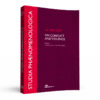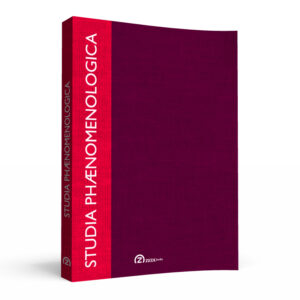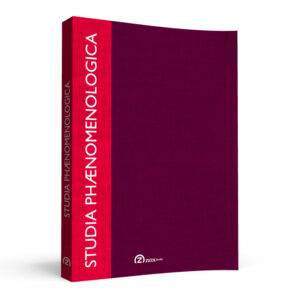ON CONFLICT AND VIOLENCE
Cristian Ciocan & Paul Marinescu: Introduction: On Conflict and Violence [OPEN ACCESS]
Bernhard Waldenfels: Metamorphoses of Violence (translation by Amalia Trepca)
- Abstract: Based on the argument that violence has a parasitic quality rather than an essence of its own, this article seeks to bring to light the conversion processes through which violence crystallises out of, as well as into, various phenomena. Violence is first examined in terms of the relation between perpetrator and victim with, however, an emphasis on the fact that violence cannot be reduced to the intention or the act of the perpetrator. On the contrary, violence is shown to have the character of pathos and to open up a dimension of which the act itself is only a part. Further, the author argues that in being directed towards the other, violence harbours a performative contradiction: by turning the addressee into a thing to be destroyed, the addressing act cancels itself. The paper also sets out to identify the breeding grounds of violence, which, due to its capacity for conversion, can be detected in various phenomena that are not necessarily linked to violence. This means that violence can resort to various mechanisms and can emerge in multiple fields of activity: in bureaucracy, economics, medicine, politics, war, and most importantly, in everyday life, hidden under inconspicuous but sometimes pervasive forms.
Pascal Delhom: L’expérience de la violence subie : accès aux phénomènes
- Abstract: There are three possible ways of access to phenomena of suffered violence: the first is the experience of those who have suffered violence themselves; the second is the experience of eyewitnesses; the third, which is the most frequent one, is an indirect access through the testimony of people belonging to the first two categories. Each way of access has advantages but also serious difficulties, both in terms of the objectivity of the experience and of the possibility to express it in language. No one is free from an affective and a normative dimension; this implies that there is a certain tension with regard to the phenomenological reduction. The paper offers an analysis of these ways of access.
James Mensch: Trust and Violence
- Abstract: Jean Améry’s memoir of his imprisonment and torture by the Nazis links the loss of “trust in the world” to the violence he experienced. The loss of trust makes him feel homeless. He can no longer find a place in the intersubjective world, the world for everyone. What is this “trust in the world” (Weltvertrauen)? How does violence destroy it? In this article, I use Améry’s remarks as guide for understanding the relation of violence, trust, and homelessness. Trust, I argue, is crucial to the constitution of the intersubjective world. Violence, by undermining trust in Others, destroys the sense that this world is “for everyone.” In excluding the victim from its “for everyone,” it enforces a homelessness that transforms the victim’s very being-in-the-world.
Michael Staudigl: Parasitic Confrontations: Toward a Phenomenology of Collective Violence [OPEN ACCESS]
- Abstract: This paper provides a phenomenological exploration of the phenomenon of collective violence, specifically by following the leading clue of war from Plato to the “new wars” of late globalization. It first focuses on the genealogy of the legitimization of collective violence in terms of “counterviolence” and then demonstrates how it is mediated by constructions of “the other” in terms of “violence incarnate.” Finally, it proposes to explore such constructions—including the “barbarian” in Greek antiquity, “the cannibal” in the context of Colonialism, or the contemporary cipher of religious irrationality— as mirror effects of one’s own disavowed forms of violence.
Burkhard Liebsch: „Herrscht“ Krieg ‒ seit je her, gegenwärtig und auf immer? „Polemologische“ Überlegungen zur Frage, ob wir ihm ausgesetzt oder (auch) ausgeliefert sind
- Abstract: This essay critically examines theories of war which imply an affirmation of the unavoidable rule of war. In contrast to such theories, the author advocates a notion of war that presupposes processes of becoming enemies, which eventually enthrone war as “dominating” power. From this position result a number of desiderata of research which call for a revision of actual theories of war.
Delia Popa: Entre réversibilité et réverbération. Une approche phénoménologique de la violence sociale
- Abstract: How can phenomenology help address the problem of social violence? Can phenomenology provide an adequate description of its essence? Is the phenomenological method able to deepen and transform its comprehension? The paper is an attempt to answer these questions through an analysis of three different testimonies of social violence entailing elements of phenomenological description. Starting with a minimal definition of the phenomenological description, understood as search for a meaning for a lived experience and substitution with those who suffer, the article discusses several issues raised by a phenomenological description of social violence, such as the danger of justifying it when searching for its meaning, of blaming the victims who suffered from it or of prolonging its traumatizing effects. The paper ends by questioning the ways in which the phenomenological method can offer support for resilience and inspire resistance to social violence.
Irene Breuer: Phenomenological Reflections on the Intertwining of Violence, Place and Memory. The Memorials of the Ungraspable
- Abstract: Acts of violence develop in relation to place and involve the violation of its very limits. Every significant place is a scene of history, its limits embrace presence and sense. As such, it is the life-worldly home of memory. In this article, I will retrieve the bodily affective dimension of the phenomenon of place memory in instances of public commemoration. Drawing on different philosophical horizons like those of mainly Heidegger, Husserl, Merleau-Ponty, Derrida, Adorno, Ricœur and Bataille, I’ll contrast their different perspectives on the question of the intertwining of violence, place and memory and refer them to the narrative work of memorials (e.g. Libeskind’s and Eisenman’s for Berlin). Insofar violence has been traditionally represented and thereby obliterated by architecture, we may ask how should genocide, as the unspeakable and ungraspable be expressed? I’ll suggest that it can only be attained by the suspension of meaning and presence: A narrative of bodily affections, of pathos, suffering and excess that accounts for what in itself remains beyond expression.
Mihai Ometiță: Hermeneutic Violence and Interpretive Conflict: Heidegger vs. Cassirer on Kant
- Abstract: The paper aims to rectify the reception of Heidegger’s so-called “hermeneutic violence,” by addressing the under-investigated issue of its actual target and rationale. Since the publication of Kant and the Problem of Metaphysics, his immediate readers, such as Cassirer, as well as more recent commentators, accused Heidegger of doing violence to Kant’s and other philosophers’ texts. I show how the rationale of Heidegger’s self-acknowledged violence becomes tenable in light of his personal notes on his Kant book, and of several hermeneutic tenets from Being and Time. The violence at stake turns out to be a genuine method, involving the appropriation (Zueignen) and the elaboration (Ausarbeiten) of an interpreted text. Its target, I argue, is not the text itself, as it was often assumed, but its reception by a community or tradition. Thus, that violence may well instill interpretive conflict, yet its purpose is to salvage a text from a conventional and ossified reception, namely, from what Heidegger regards as the authoritarianism of idle talk (Gerede) in a philosophical milieu.
Chiara Pesaresi: « L’ébranlement du monde bien connu » : Lectures croisées de Patočka et Maldiney
- Abstract: The aim of this article is to analyze the idea of the event conceived as crisis and conflict in Patočka and Maldiney’s thought. The event is what tears the horizon of the meaningful world apart and opens a new world: it represents the opening of a crisis in the human existence and at the same time the condition of any future crisis to come. By reading Maldiney’s texts on the “pathique” and the psychosis along with Patočka’s descriptions of historical existence, we shall then discover that human existence is exposed (and respond) to this chaotic and conflictual dimension. In fact, what defines the existence—the individual existence (Maldiney) as well as the historical, shared existence (Patočka)—is the exposure to such a conflict and to the critical event, i.e. to the possibility of its own shaking. Furthermore, the event appears as the root of both the krisis and the “koinè”, whether it is in the form of the encounter (Maldiney) or the community cohesion (Patočka).
Jason W. Alvis: Ricœur on Violence and Religion: Or, Violence Gives Rise to Thought [OPEN ACCESS]
- Abstract: This essay demonstrates Ricoeur’s explication of the various roles religion can play especially in regards to acts of collective violence, and also how his conceptions take us beyond the traditional dichotomies of religion as necessarily violent, or necessarily peaceful. It focuses on three essays where his most formidable reflections on religion and violence can be found: “Religion and Symbolic Violence” (1999), “Power and Violence” (first published 1989), and “State and Violence” (first published 1955). First, the essay hermeneutically describes the intricate relationship between violence and religion within these three essays, pointing to (i) three perils of religion especially regarding communities, (ii) the figure of the magistrate within some religiously motivated political revolutions, and (iii) the danger of ecclesiastical orders demonstrating not only authority but also forms of domination. The essay then phenomenologically ties these three threads together, demonstrating a way of understanding both the promises and perils of religion as it relates to violence, both in the work of Ricoeur and beyond it.
Michael Barber: Could the Focus on Transcendental Violence Be Violent?
- Abstract: Eddo Evink criticizes Emmanuel Levinas’s supposed view that all acts of intentionality and rationality commit transcendental violence against their objects, including the Other. If this is so, Levinas undermines the possibility of his own philosophy. Evink further argues: that there are non-violent forms of intentionality and so intentionality is only potentially violent; that some non-violent counter-pole is needed to define violence; that there are contradictions in Levinas’s notion of violence; that Levinas, like empiricists, aspires to a metaphysical absolute untainted by language; and that he presupposes the philosophical, ontological, and linguistic frameworks he criticizes. However, to answer these objections, one must understand Levinas as developing two distinct modalities of relationship: Being and Otherwise than Being. These modalities clash in the face-to-face relationship when the phenomenon of the face defects into responsibility for the Other. The epistemology and ontology of Being involve distinctive acts, affects, forms of temporality, and experiences of self that undergo a tectonic shift in confrontation with the ethically obligating Other. Here the focus is not on the violence of concepts ever seeking to subjugate the Other but rather on the Other whose summons both provokes knowledge to retreat and is able to be shown in a philosophy, even if that philosophy betrays the saying in the said while also having the potential to reduce that betrayal. The focus should not be on transcendental violence tracking down and cornering the Other but on the Other ethically disrupting Being. With that focus, it becomes clear that concentrating on transcendental violence is a kind of violence.
Leonard Lawlor: The Most Difficult Task: On the Idea of an Impure, Pure Non-Violence (in Derrida)
- Abstract: This article attempts to elaborate on the Derridean idea of transcendental violence and his idea of “violence against violence.” It does this by examining the structure of the gift as Derrida presents it in Given Time. The article lays out in detail all of the conditions for the gift Derrida presents across Given Time. More precisely, it examines Derrida’s analysis of the giving of counterfeit money. The conclusion it draws is that the giving of counterfeit money comes closest to the golden mean between exchange and non-exchange (or pure gift-giving), the golden mean between violence and non-violence. But the open question is: should we prescribe the giving of counterfeit money for all gift-giving and even for human relations of friendship and love?
VARIA
Mădălina Guzun: Briser le silence : Le déploiement de la langue comme traduction du silence en son chez Martin Heidegger
- Abstract: The aim of the present article is to offer a new interpretation of Heidegger’s account of the unfolding of language by analyzing the notion of Geläut der Stille, “sounding gathering of silence.” Taking as a starting point the experience of silence described by Stefan George in his poem “The Word,” the article presents the opposition between silence and the sounding words, showing that the latter coincide with the language we speak. The passage from silence to the spoken language belongs to the unfolding of language itself, which presents itself as a translation of silence, redefining thus what translation originally is. The latter, understood as violence and harmony, gathers itself under the term of “rift,” overcoming thus the ontological difference and offering us a radically new perspective over the nature of “relation” within Heidegger’s thinking.
Max Schaefer: Bonds of Trust: Thinking the Limits of Reciprocity with Heidegger and Michel Henry
- Abstract: This paper seeks to address whether human life harbours the possibility of a gratuitous or non-reciprocal form of trust. To address this issue, I take up Descartes’ account of the cogito as the essence of all appearing. With his interpretation of Descartes’ account of the cogito as an immanent and affective mode of appearing, I maintain that Henry provides the transcendental foundation for a non-reciprocal form of trust, which the history of Western philosophy has largely covered over by forgetting this aspect of Descartes’ thought. I demonstrate that Heidegger’s reading of Descartes serves as a pre-eminent example of this. Because Heidegger overlooks Descartes’ insight into the essence of appearing, and reduces this essence to the finite transcendence of the world, I maintain that Heidegger reduces trust to reciprocal relations of understanding between beings of shared contexts of significance.
Ahmet Süner: The Ineluctable Sign in Sartre’s Account of Franconay’s Imitation
- Abstract: The most interesting example of all the physical images that Sartre examines in L’Imaginaire concerns a female performer’s (Franconay’s) imitation of a male performer (Chevalier). The example is a unique instance in which Sartre deals explicitly with the possibility of ambiguity and hybridity in consciousness. Sartre’s introduction of the sign into the consciousness of imitation ties the perception of Franconay with the imaged Chevalier, but it also leads to the dissemination of the sign across the entire consciousness, a consequence that runs against Sartre’s analytic tendencies. I argue that, despite Sartre’s endeavor to keep the sign separate from perception and the image, the sign is a diffuse property of the entire consciousness of imitation, penetrating and contaminating its every instant. Sartre’s account of Franconay’s imitation contains the germs of the destruction of his clear-cut analytic distinctions, revealing the irreducible hybridity of the sign with both perception and the image.
Mathieu Cochereau: La Dissidence et l’unité des trois mouvements de l’existence chez Jan Patočka
- Abstract: Jan Patočka is usually connected with Czech dissidence, a political movement which stood up against the communist government. We want to make the hypothesis that the notion of dissidence is not originally a political one but a phenomenological one above all. Dissidence is a movement of distancing which implies a rootedness and this movement of distancing is peculiar to human beings. Patočka calls “movement of human existence” this paradoxical rootedness which is a extramundane and mundane position. Thus, we have to review the theory of the three movements of human existence. While it is tempting to separate the third movement, as a movement of transcendence, and to describe it as a political dissidence, we would like to show that the three movements (and not only the third), the existence as a movement, have to be read as a Dissidence.
BOOK REVIEWS
- Erik Norman Dzwiza-Ohlsen: Hans Blumenberg, Phänomenologische Schriften. 1981–1988 (Berlin: Suhrkamp, 2018)
- Alexandru Bejinariu: Alexander Schnell, Was ist Phänomenologie? (Frankfurt a. Main: Vittorio Klostermann, 2019)
- Christian Ferencz-Flatz: Nicolas De Warren & Thomas Vongehr (eds), Philosophers at the Front. Phenomenology and the First World War (Leuven: Leuven University Press, 2017)
- Mihaela-Cătălina Condruz: Mark Vorobej, The concept of violence (New York: Routledge, 2016)
- Delia Popa: Claire Marin, Rupture(s) (Paris: L’édition de L’Observatoire/La relève, 2019)






